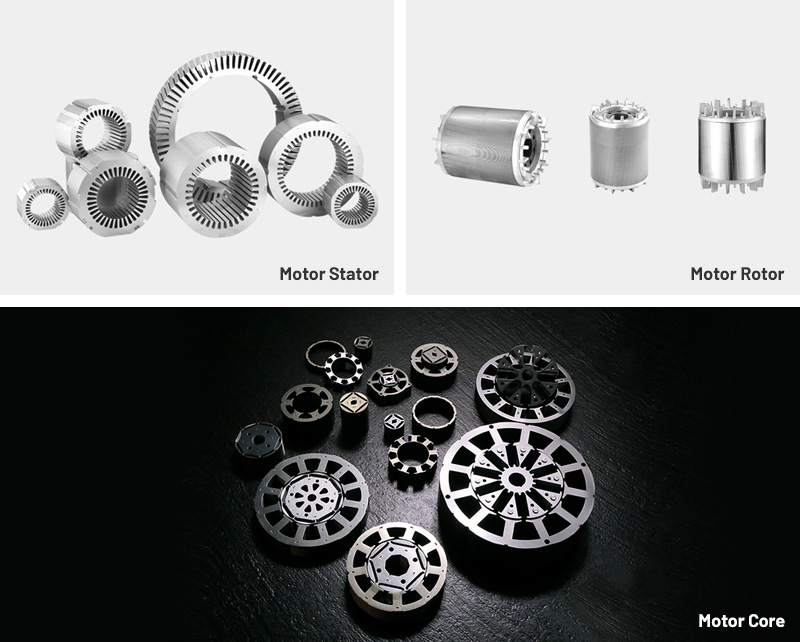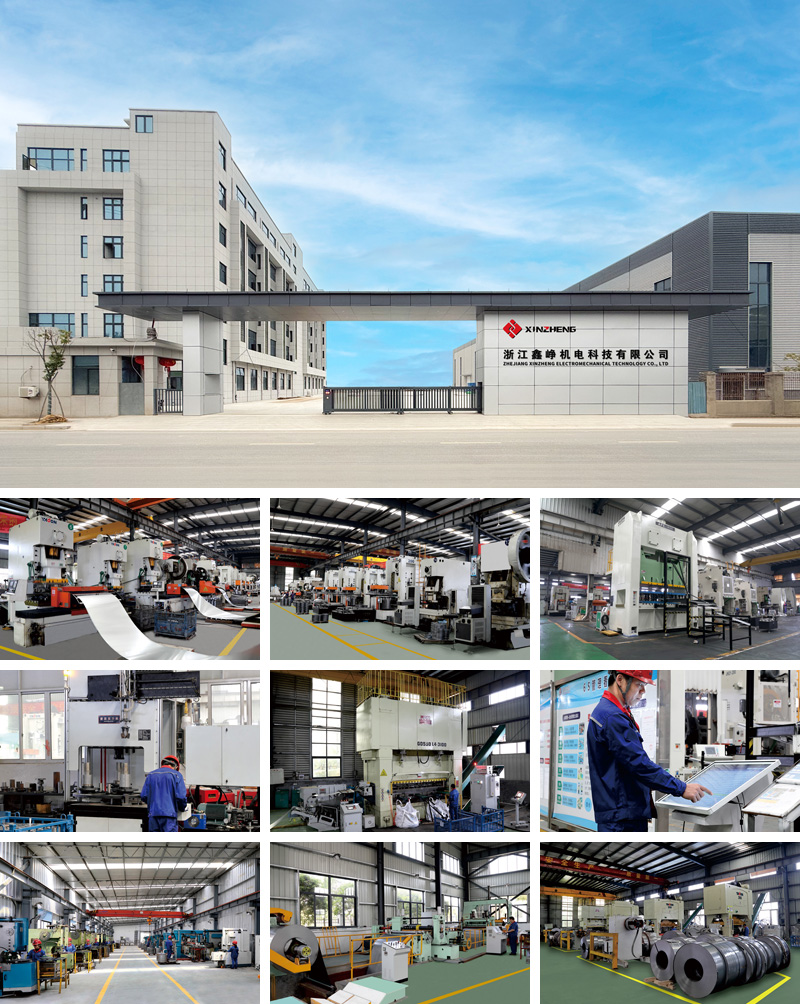Electric motors are the backbone of numerous industrial, automotive, and consumer applications. From factory automation to renewable energy and electric vehicles, motors operate under a wide range of environmental conditions. One of the persistent challenges in these applications is corrosion, which can significantly degrade motor performance, reduce efficiency, and shorten operational lifespan. Moisture, salt, chemicals, and high humidity environments accelerate oxidation in standard motor laminations, causing energy losses, mechanical degradation, and increased maintenance costs.
Corrosion-resistant motor laminations address these challenges by combining advanced material selection and protective treatments to maintain magnetic and mechanical performance over extended service periods. Industries with stringent reliability requirements—including marine propulsion, offshore wind turbines, chemical processing, and outdoor HVAC systems—are increasingly adopting corrosion-resistant laminations to ensure uninterrupted operation and long-term cost efficiency.
Motor laminations are thin sheets of electrical steel stacked to form the stator and rotor cores, guiding magnetic flux while minimizing energy losses due to eddy currents and hysteresis. Corrosion-resistant laminations extend this fundamental function by incorporating materials or coatings that prevent oxidation and maintain structural integrity under aggressive environmental conditions.
Key technical principles include:
Material Resistance: Laminations are manufactured from high-quality electrical steel or alloyed steels with inherent corrosion resistance, often enhanced with protective coatings.
Insulation Integrity: Coatings and inter-lamination insulation prevent moisture ingress, maintaining electrical and magnetic performance.
Dimensional Stability: Tight tolerances in lamination thickness, shape, and stacking reduce air-gap variation, vibration, and potential weak points where corrosion could initiate.
Thermal and Chemical Stability: Laminations are engineered to withstand elevated temperatures, humidity, and chemical exposure without degradation.
By integrating these principles, corrosion-resistant motor laminations enhance motor efficiency, reliability, and operational lifespan in challenging environments.
Corrosion-resistant laminations rely on premium material selection:
Electrical Steel (Silicon Steel): High-purity silicon steel with low carbon content reduces susceptibility to rust while maintaining excellent magnetic properties.
Alloyed Steels: Stainless or nickel-iron alloys enhance resistance to oxidation and chemical attack, particularly in marine and chemical processing applications.
Protective Coatings: Inorganic, organic, or hybrid coatings prevent moisture penetration and chemical degradation, preserving magnetic and mechanical performance.
Laminations are precision-engineered to provide both magnetic efficiency and mechanical durability:
Uniform Thickness: Ensures consistent air gaps and reduces localized magnetic saturation.
Precision Edges: Minimizes burr formation, which could trap moisture or initiate corrosion.
Flatness and Alignment: Proper stacking prevents gaps and mechanical vibration that may exacerbate corrosion under cyclic loading.
Enhanced Corrosion Resistance: Laminations maintain structural and magnetic integrity in humid, salty, or chemically aggressive environments.
Energy Efficiency: Reduced eddy currents and hysteresis losses ensure high torque output and lower operational energy consumption.
Mechanical Stability: Resistant to warping, delamination, or cracking over time.
Thermal Reliability: Coatings and material properties withstand continuous operation at elevated temperatures.
Material Inspection: Electrical steel or alloy sheets are tested for purity, magnetic properties, and thickness consistency.
Cutting: Precision die-cutting or laser-cutting reduces burrs, maintains dimensional accuracy, and ensures flatness.
Stress-Relief Annealing: Heat treatment removes residual mechanical stresses, improving magnetic and structural stability.
Coating Application: Protective layers are uniformly applied and cured for long-term corrosion resistance.
Stacking and Assembly: Laminations are aligned and compressed into stator or rotor cores with precise orientation to maintain magnetic uniformity and minimize gaps.
Several critical factors determine the effectiveness of corrosion-resistant motor laminations:
Material Composition: Impurities, inconsistent alloying, or low-quality steel can compromise corrosion resistance and magnetic performance.
Dimensional Accuracy: Variations in thickness or shape can create air gaps, stress points, and increased vibration, reducing durability.
Coating Quality: Poor adhesion, uneven application, or insufficient curing can allow moisture or chemicals to penetrate, initiating corrosion.
Residual Stress: Laminations with unrelieved stress are more prone to deformation and surface cracking, which may accelerate corrosion.
Assembly Precision: Misaligned laminations or inconsistent stacking can create weak points susceptible to environmental attack.
Choosing a reliable supplier is essential for consistent quality in corrosion-resistant laminations:
Material Certification: Detailed chemical composition, mechanical, and magnetic property documentation.
Process Transparency: Suppliers should provide information on cutting, annealing, and coating procedures.
Quality Control: Inspection of thickness, flatness, burrs, and coating integrity ensures reproducibility.
Production Capacity: Ability to deliver consistent batches for OEMs or industrial-scale projects.
Standards Compliance: ISO certifications, environmental regulations, and industry-specific testing enhance trust and performance assurance.
Despite technological advances, manufacturers face several challenges:
High Material and Production Costs: Premium alloys, specialized coatings, and precision manufacturing increase expenses.
Complex Manufacturing: Maintaining tight tolerances while ensuring uniform coating application and stress-relief treatment is technically demanding.
Environmental Variability: Corrosion performance must be maintained under fluctuating temperature, humidity, and chemical exposure conditions.
Supply Chain Variability: Differences in raw material quality, coating methods, and annealing processes can affect performance consistency.
Corrosion-resistant motor laminations are particularly important in applications exposed to moisture, chemicals, or harsh outdoor conditions:
Marine Motors: Propulsion and auxiliary motors in ships and offshore platforms require protection against saltwater corrosion.
Renewable Energy: Offshore wind turbines and hydroelectric generators operate in highly corrosive environments.
Industrial Processing: Motors in chemical plants, refineries, and wastewater treatment facilities are exposed to humid and chemically aggressive conditions.
Outdoor HVAC Systems: Motors in air conditioners, ventilation systems, and pumps benefit from corrosion resistance to maintain long-term efficiency.
Transportation and Electric Vehicles: Road and rail motors must resist road salt, humidity, and environmental exposure while maintaining energy efficiency.
The corrosion-resistant lamination industry continues to innovate:
Advanced Alloys: Stainless and nickel-iron steels improve both magnetic performance and corrosion resistance.
Hybrid Coatings: New inorganic-organic coatings enhance chemical, thermal, and mechanical durability.
Precision Manufacturing: Laser-cutting, EDM, and automated stacking improve dimensional accuracy and reduce burr formation.
Integrated Design Approaches: Laminations are optimized in combination with rotor, stator, and housing design to maximize efficiency and corrosion protection.
Global Standardization: Industry-wide performance specifications and certifications ensure consistent quality across geographies and suppliers.
Q: What makes a lamination corrosion-resistant?
A: Material selection, protective coatings, and precise manufacturing prevent oxidation, rust, and chemical degradation while maintaining magnetic properties.
Q: How do corrosion-resistant laminations improve motor lifespan?
A: By preventing oxidation and mechanical degradation, they maintain structural and magnetic integrity over extended operational periods.
Q: Are these laminations suitable for marine and chemical industries?
A: Yes. They are specifically engineered to withstand high humidity, saltwater, and exposure to corrosive chemicals.
Q: Do corrosion-resistant laminations increase motor cost?
A: They may involve higher initial material and production costs, but they reduce maintenance, downtime, and energy loss, offering favorable total cost of ownership.
Corrosion-resistant motor laminations are essential for high-performance, reliable, and long-lasting electric motors operating in harsh environments. By combining premium materials, precision cutting, stress-relief annealing, and advanced coatings, these laminations maintain magnetic efficiency, structural stability, and operational reliability over extended service periods. Applications range from marine propulsion and renewable energy to industrial processing and outdoor HVAC systems, where corrosion could otherwise compromise motor performance. Advances in materials, coating technology, and manufacturing precision ensure that corrosion-resistant laminations remain a key enabler of durable, energy-efficient, and high-performance motor solutions in global markets.
Product Category

Comprehensive Strength


Copyright © Zhejiang Xinzheng Electromechanical Technology Co., Ltd. All Rights Reserved.
This website uses cookies to ensure you get the best experience on our website.